In 2017, around the time I started working as an software engineer at Archive.org, I also started my own studio, Functional Technologies, LLC. Or just Functional for short.
I’ve toyed with app and website ideas. I’ve created personal prototypes. I’ve done web development consulting (mostly with Use All Five). But when I was laid off from Slack in January 2023, it kicked off a process of uninhibited exploration, that feels like the sequel to my beloved time as an undergrad studio at UCLA’s Design | Media Arts department.
This free time has allowed me to pick up many idle threads, and unfinished processes and connect different dots.
WordPress and PHP
One of the subjects, I became passionate about was WordPress and the WordPress ecosystem. As a “serious” software engineer, I get the sense that I should feel shame for considering using WordPress.
PHP is a bad word among developers in San Francisco. Real engineers supposedly use Node, Python, or anything but PHP. I know both those languages well, but I still see the use case for PHP in some contexts. Not the mention, that some of the world’s biggest sites use PHP – Facebook, Archive.org, Cargo, Slack, and any WordPress site. This isn’t a love letter to PHP, but I do appreciate how simple (and cheap) deployment is. With a cheap shared hosting plan (eg Dreamhost), you can deploy unlimited small sites or prototypes, and not have to worry about managing a VPS, or hitting other artificial price walls. PHP is great for tinkering.
Anyway, at the beginning of time off I read a book about WordPress plugin development, and got excited about all the features I could add to a blog or website. For example, create custom short codes and content types, etc.
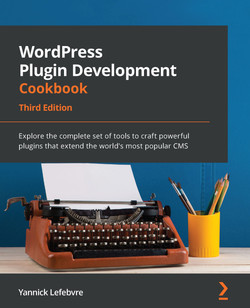
WordPress gets used for many different purposes – eg. websites, stores, but at it’s core it is a blog platform. That’s why I am excited to start this blog with WordPress. It’s the perfect tool for the job. And it’s also nice that a couple years ago, I dove into the weeds of WordPress plugin development. Lastly, server-rendered WordPress sites are great for SEO, and also for long preservation via the Wayback Machine.
Electronics
After setting the WordPress plugin book aside (admittingly only about 75% read), I picked a new fascination: electronics. New isn’t exactly right. I’ve always been interested in electronics. Whenever I go to a thrift store, which is often, I go straight to the electronics section. In college, we had classes with Arduino, and made media art to show in galleries. You can see my old portfolio here.
“Press Me” a interactive artwork I created for the 2009 UCLA | DMA Senior Show (More info)

But when I graduated college in 2009, there were no media artist jobs, but there were countless web developer jobs. Not to mention, I had an offer on the table to be the first engineer at Cargo.site. Taking that job set me on course for a ~15 year journey as a web developer / software engineer / design engineer (whatever you want to call it).
Software development has always been a skill and a tool – albeit one that pays pretty well. But if I have the time to take a step back, I as a designer (I think I can call myself that), I’m interested in tools, devices, objects that we use. Things that are functional.
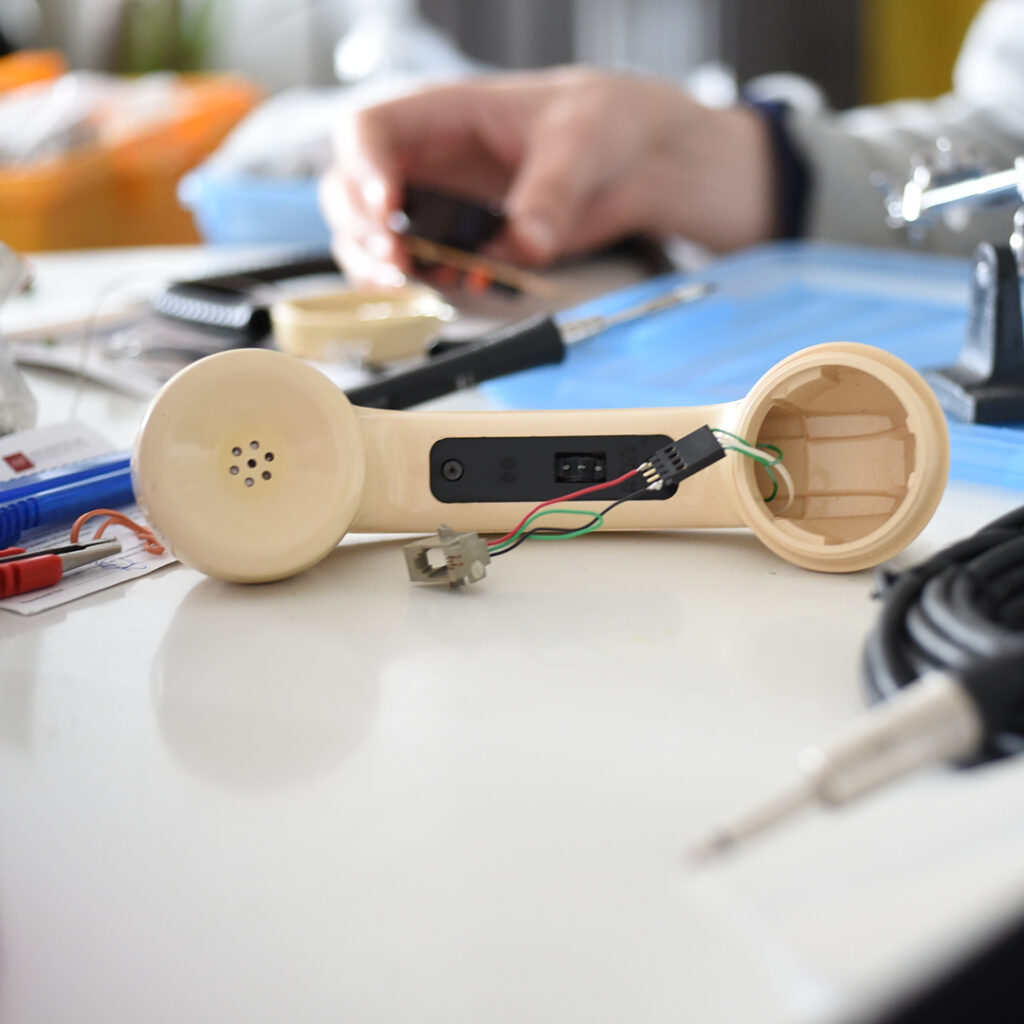
On my birthday in 2024, I went to a thrift store in Pacifica, and I found a vintage phone headset. I’d seen online these converted to microphones, and I decided to try it myself.
People usually drill a hole to mount a 1/4″ jack, but I wanted to use the existing RJ9 port, so I could use the original spiral cable for the audio. Most people just use the ear speaker for the microphone as well. I became curious on how to use the actual microphone, and started to do some research – you have to supply some voltage to the mic. How much voltage? What resistors should I use? These questions, kicked off a domino effect, where I spent the summer fascinated and learning about electronics.

I continued learning about all the parts of a circuit – full bridge rectifier, smoothing capacitors, op amps, 555 timers, to name a few. The books of Forrest M. Mimms III were helpful in this process, as well as countless Youtube videos.
One of the highlights of this process was designing and fabricating a circuit of my own design. The product is not released yet, but here’s a photo of the circuit board.


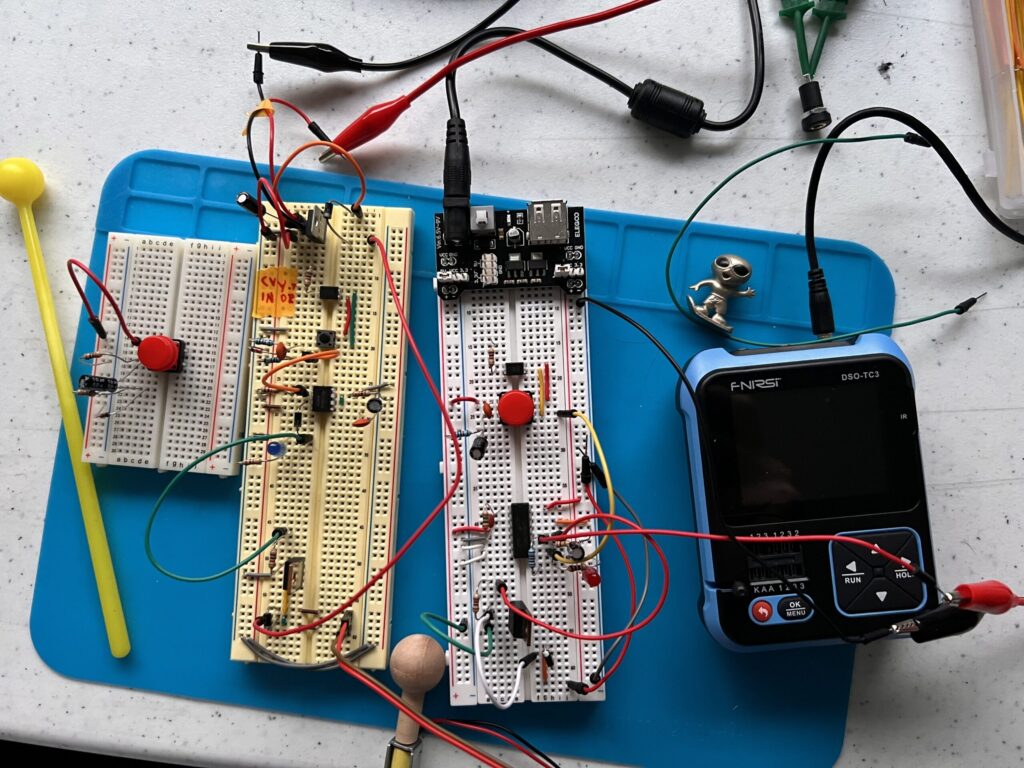
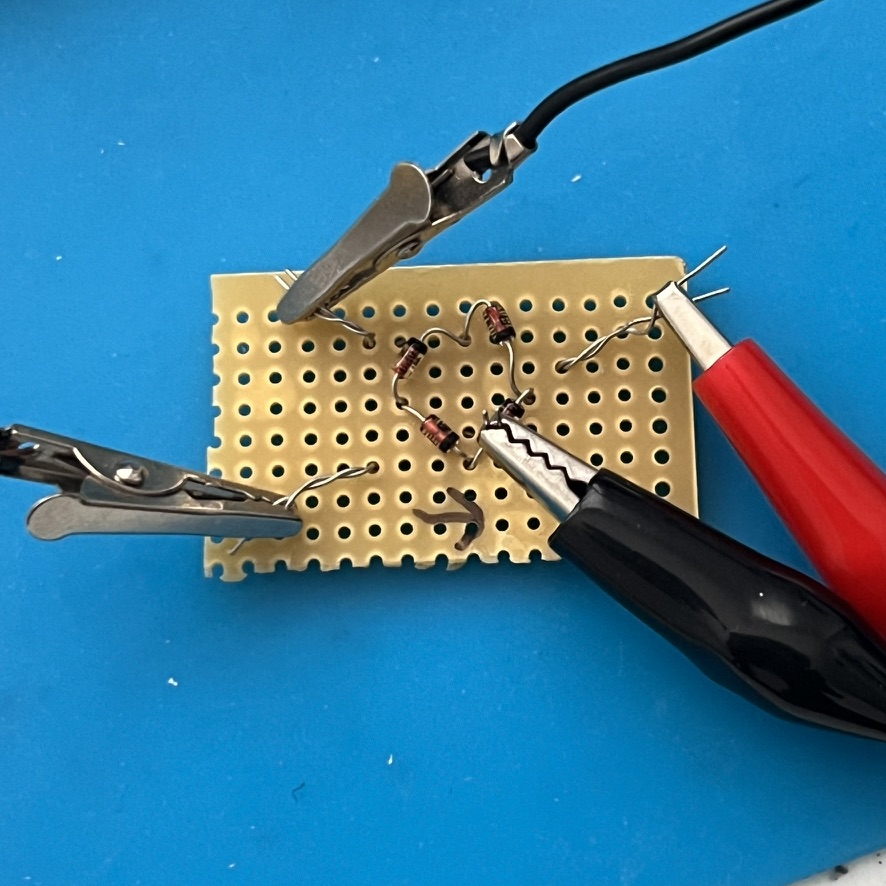
Boomboxes & Repairs
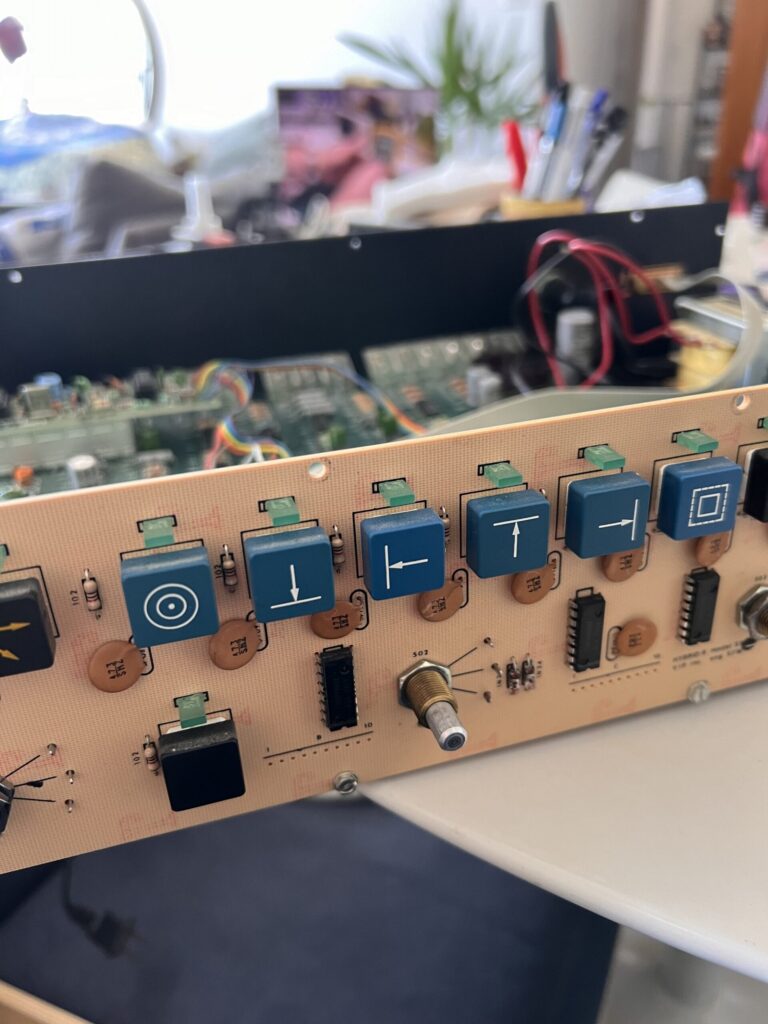
Around the same time I did the phone microphone, I thrifted a video effects box from Salvation Army, but it kept turning off after a few minutes of usage. Feeling emboldened, I fixed it with a couple new capacitors, and now I was addicted to fixing electronics.
My friend Frank Phipps gave me his old Panasonic cassette player. I decided to try my hand at replacing the rubber belts. Turns out it was pretty easy.
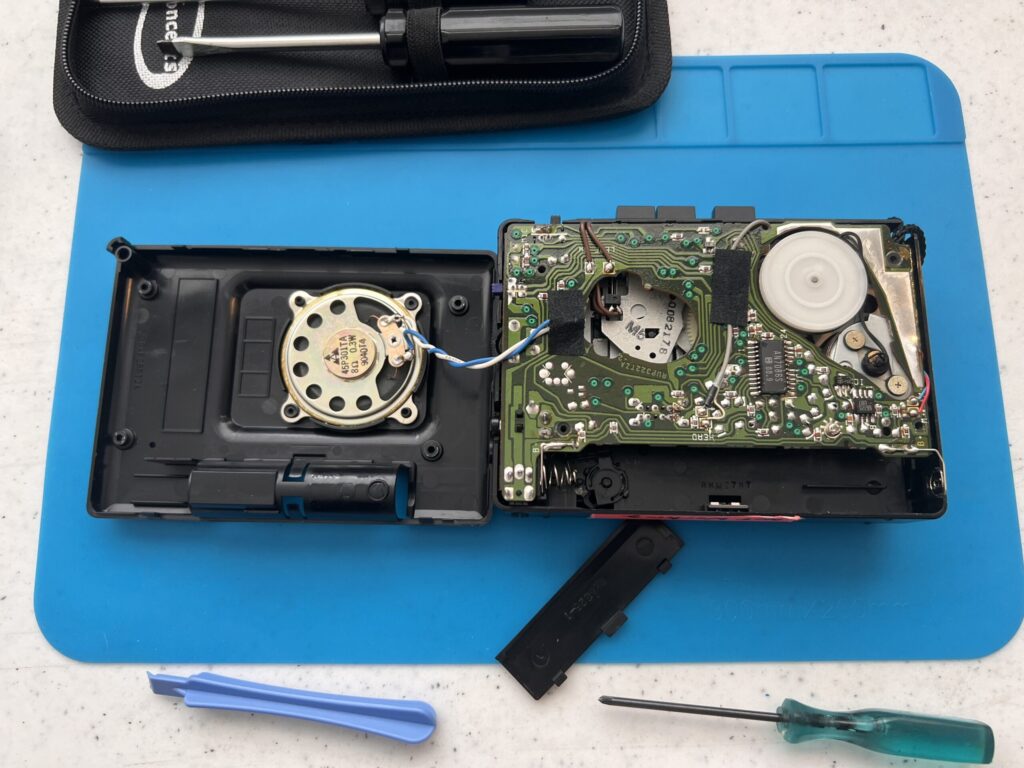
Next, I won a Yellow Sony Boombox from Goodwill Ebay, fixed it, and listed it on Facebook Marketplace. Interest was very high, so I bought 3 more on Ebay. I started to actively seek out and repair cassette players and then 4-tracks. Also keyboards. Anything I could get my hands on. I even started doing repairs (mostly changing belts) for customers.
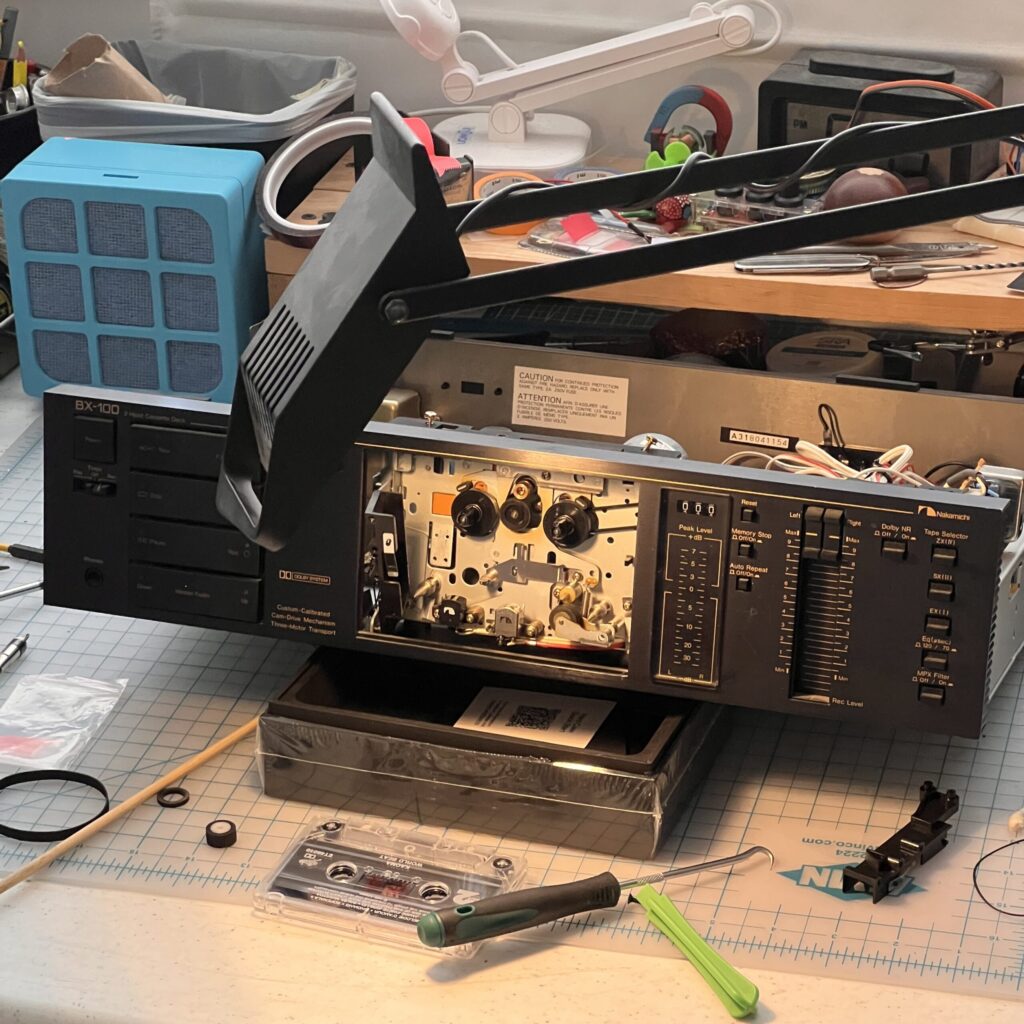
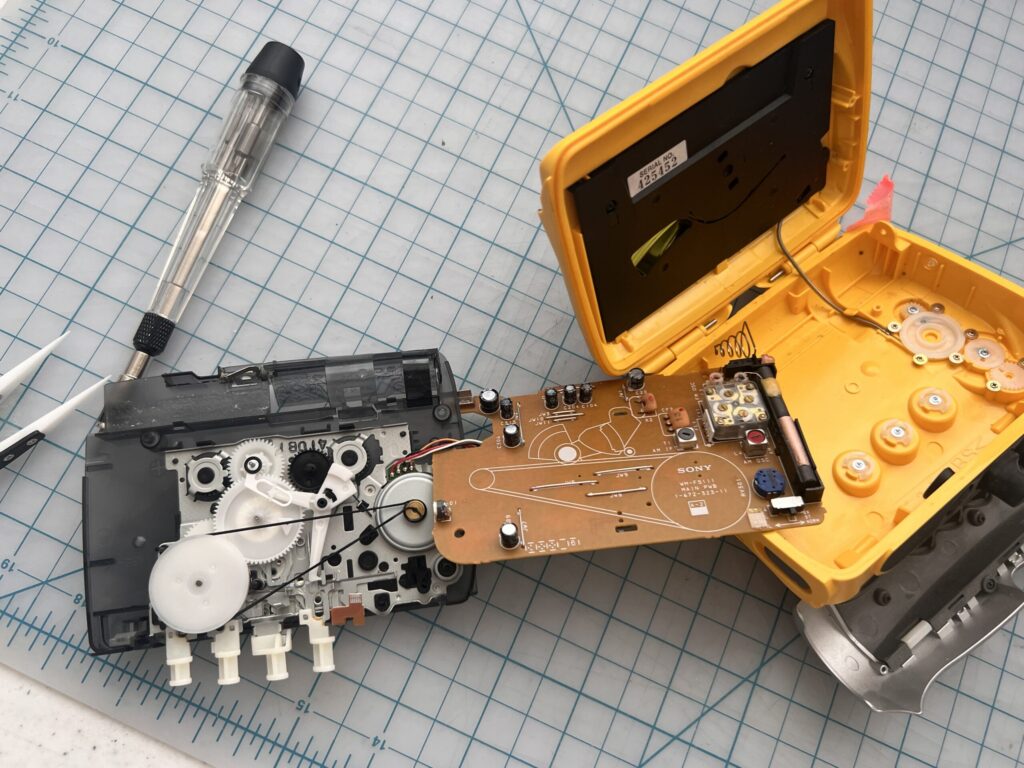
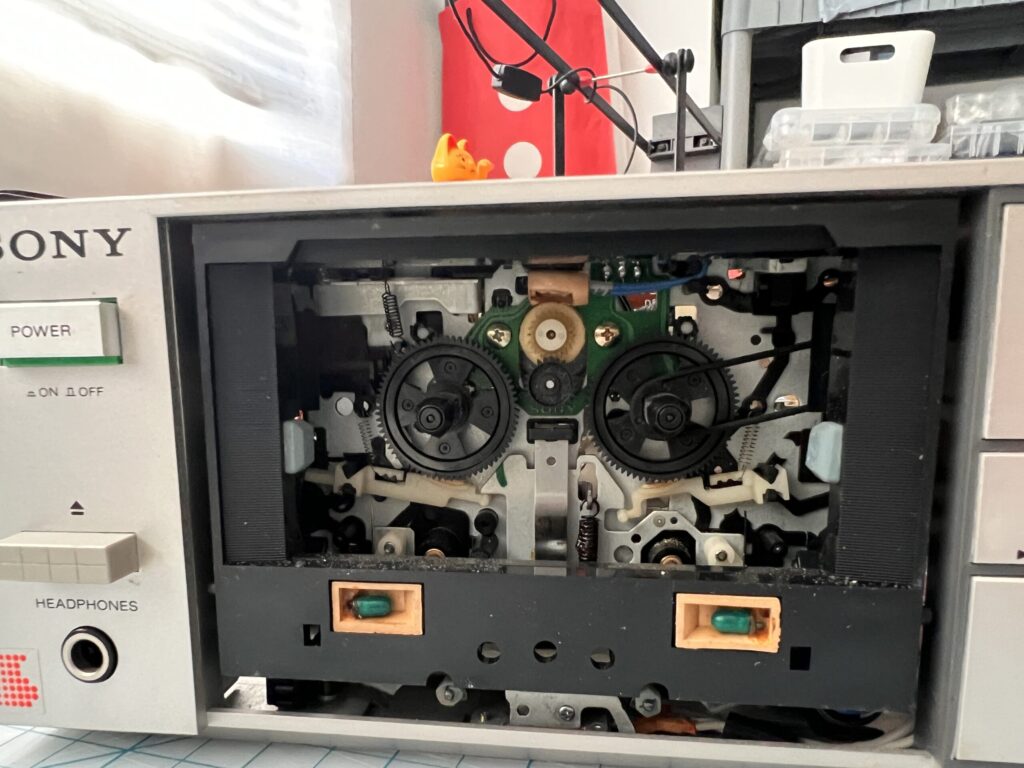

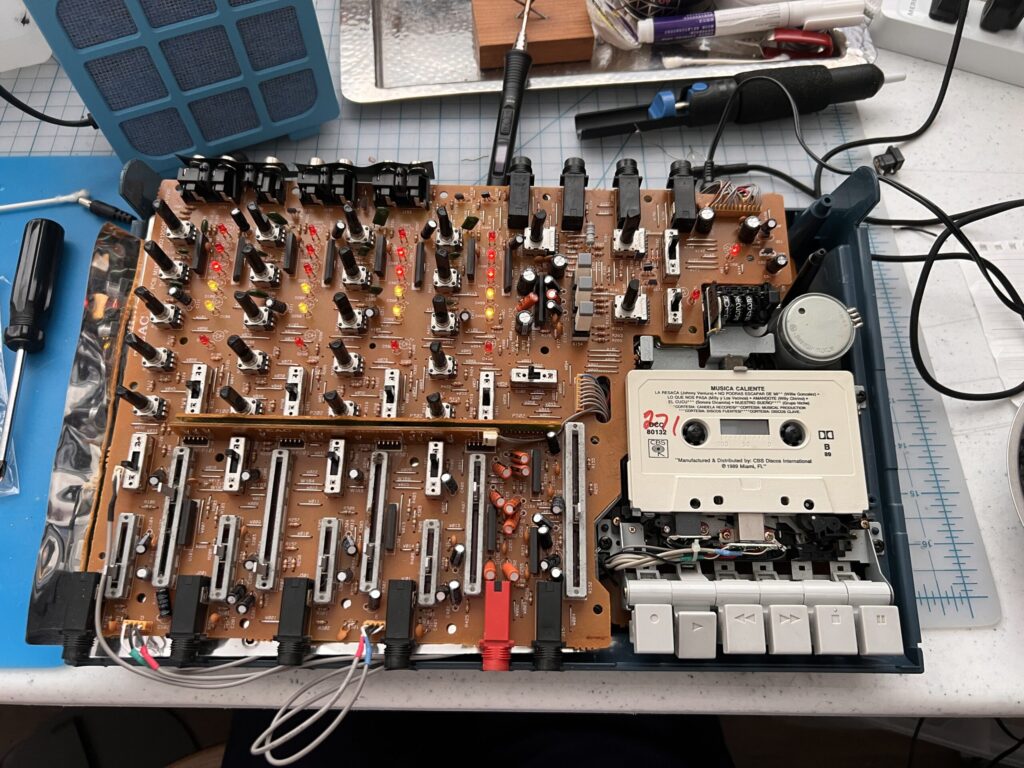
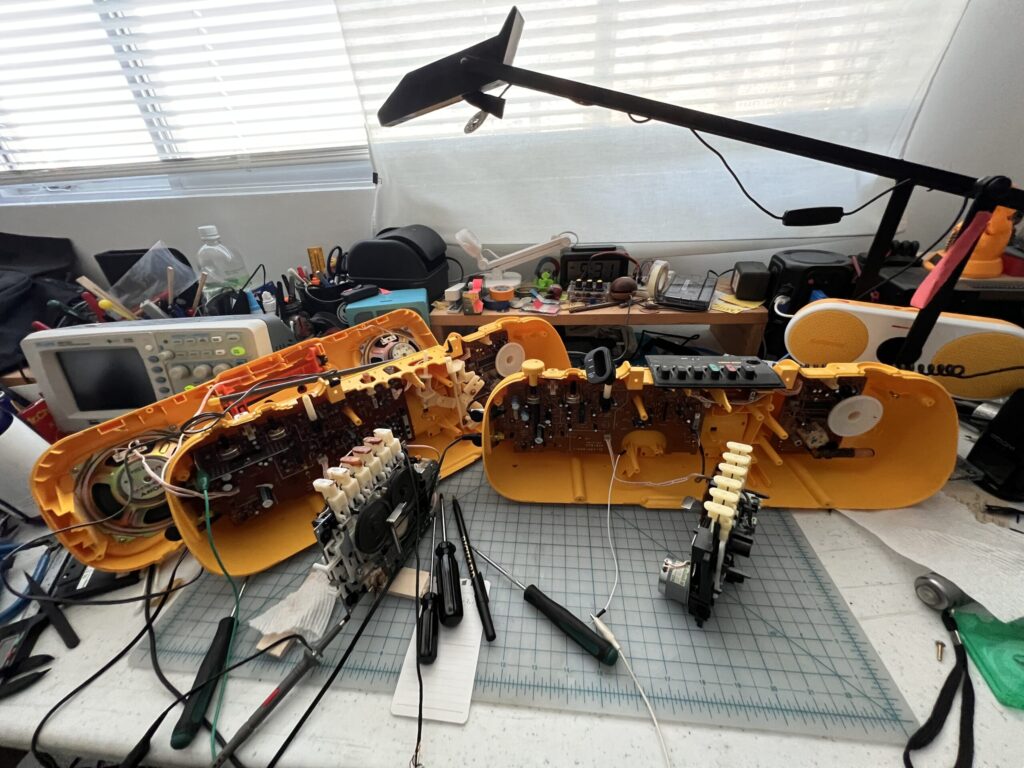
Fabrication
I also purchased a 3D printer – Bamboo A1 Mini. This unlocked creating my own tools and parts. Learning Fusion 360 was easy – or at least learning it enough to make simple parts.

Replacement Knobs
Popular on ebay (link)
USB Cable Strain Relief
Not so popular, but I find it useful.
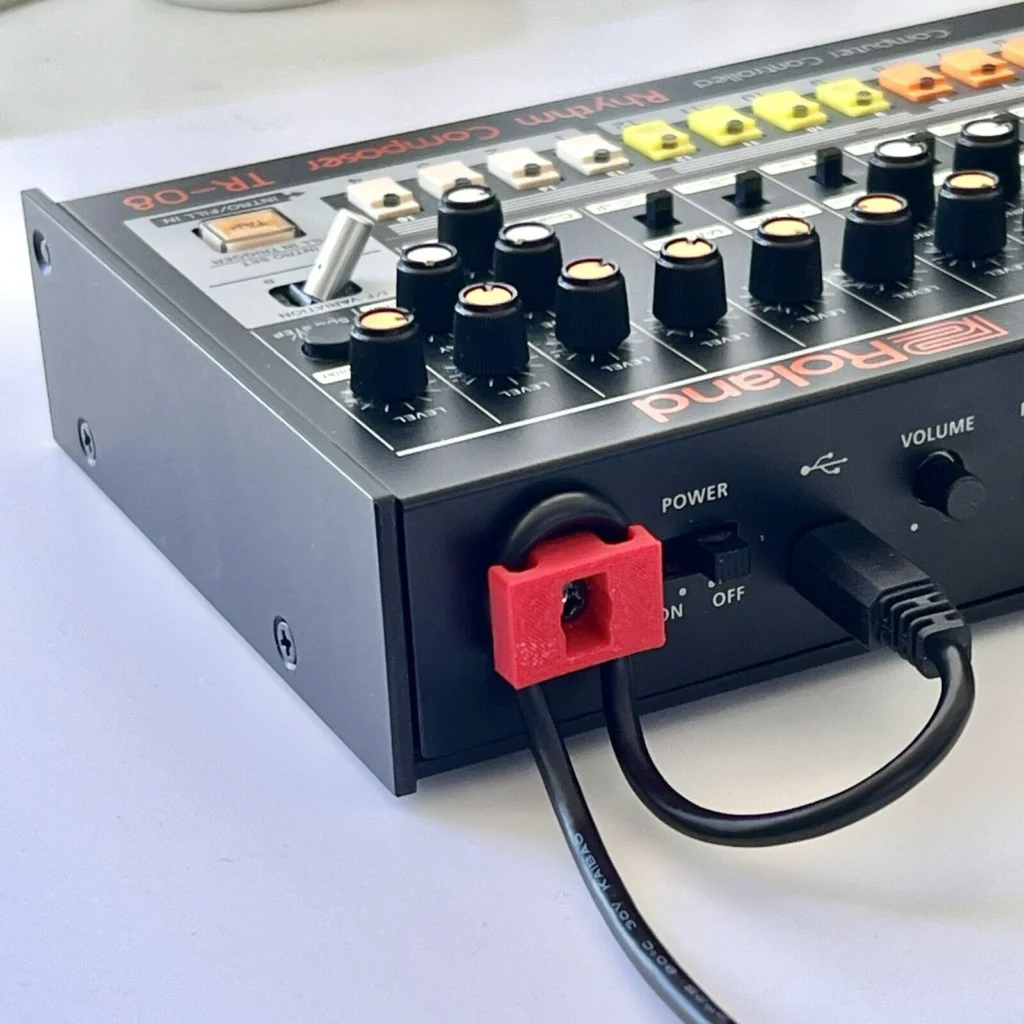
Music
This post wouldn’t be complete without mentioning music and audio gear as one of the dots in this equation. I’ve always had a fascination with music tools and production—and also with playing and recording music. I played jazz piano professionally in San Francisco throughout 2024 some of 2025. Like many musicians, I’ve found that vintage analog gear has more character and often sounds better. Of course, that sometimes comes with the cost of maintenance—like changing the pickups on a Fender Rhodes, replacing a scratchy knob on a synthesizer, or replacing some aging capacitors.
Creating and recording music also brings its own publishing challenges. I’ve built my own prototypes for sharing recordings of gigs with other musicians, and I’m exploring ways to self-publish album releases outside of platforms like Spotify, Bandcamp, and SoundCloud.
Conclusion
I’m not trying to write a novel right now. So I think I’ll end this post here. But this blog will contain a database of my repairs, thoughts, and projects. Hopefully it can be a resource if you find yourself repairing the same device. Or maybe it will inspire you to work on something similar. Also feel free to get in touch.
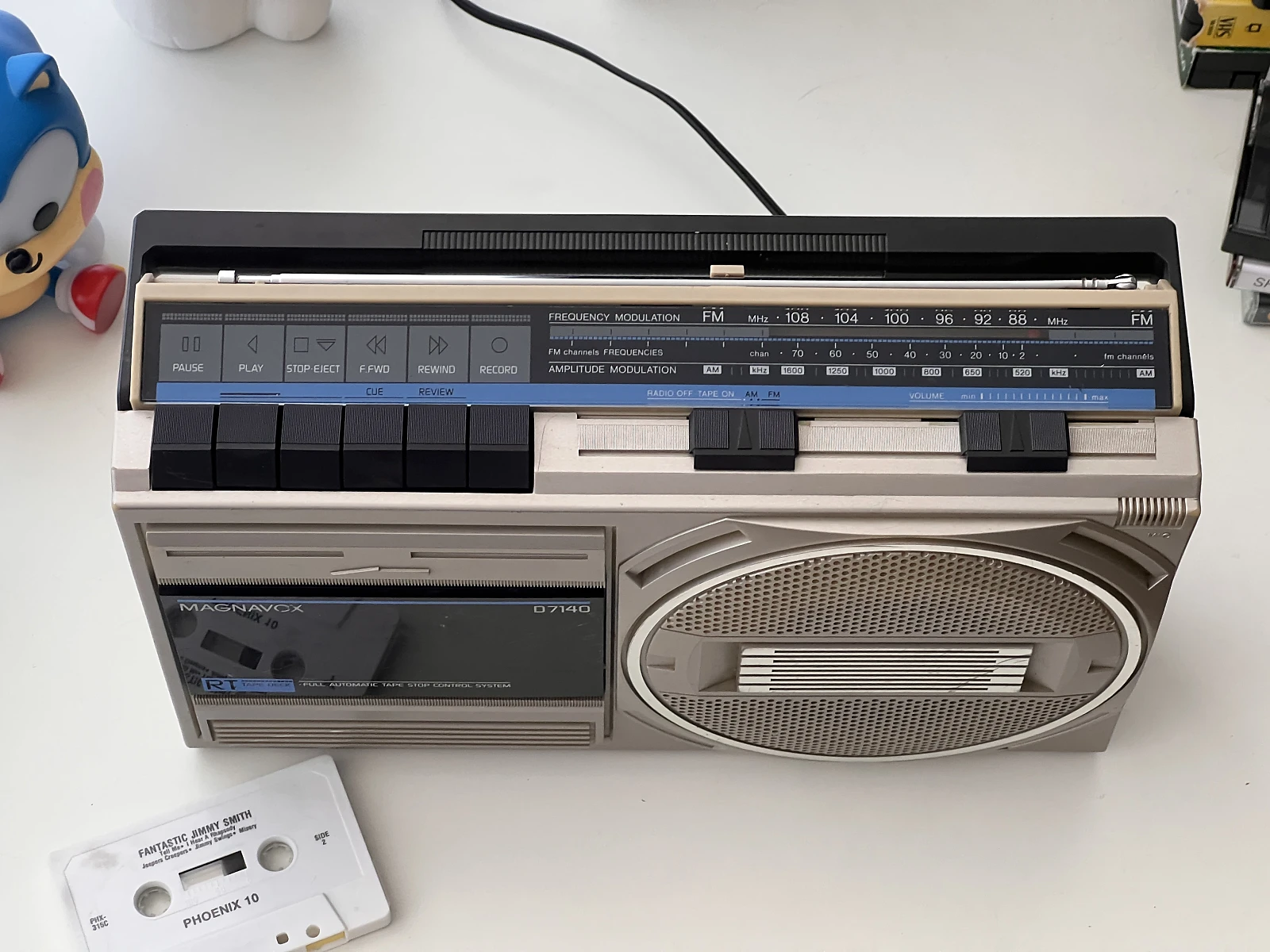
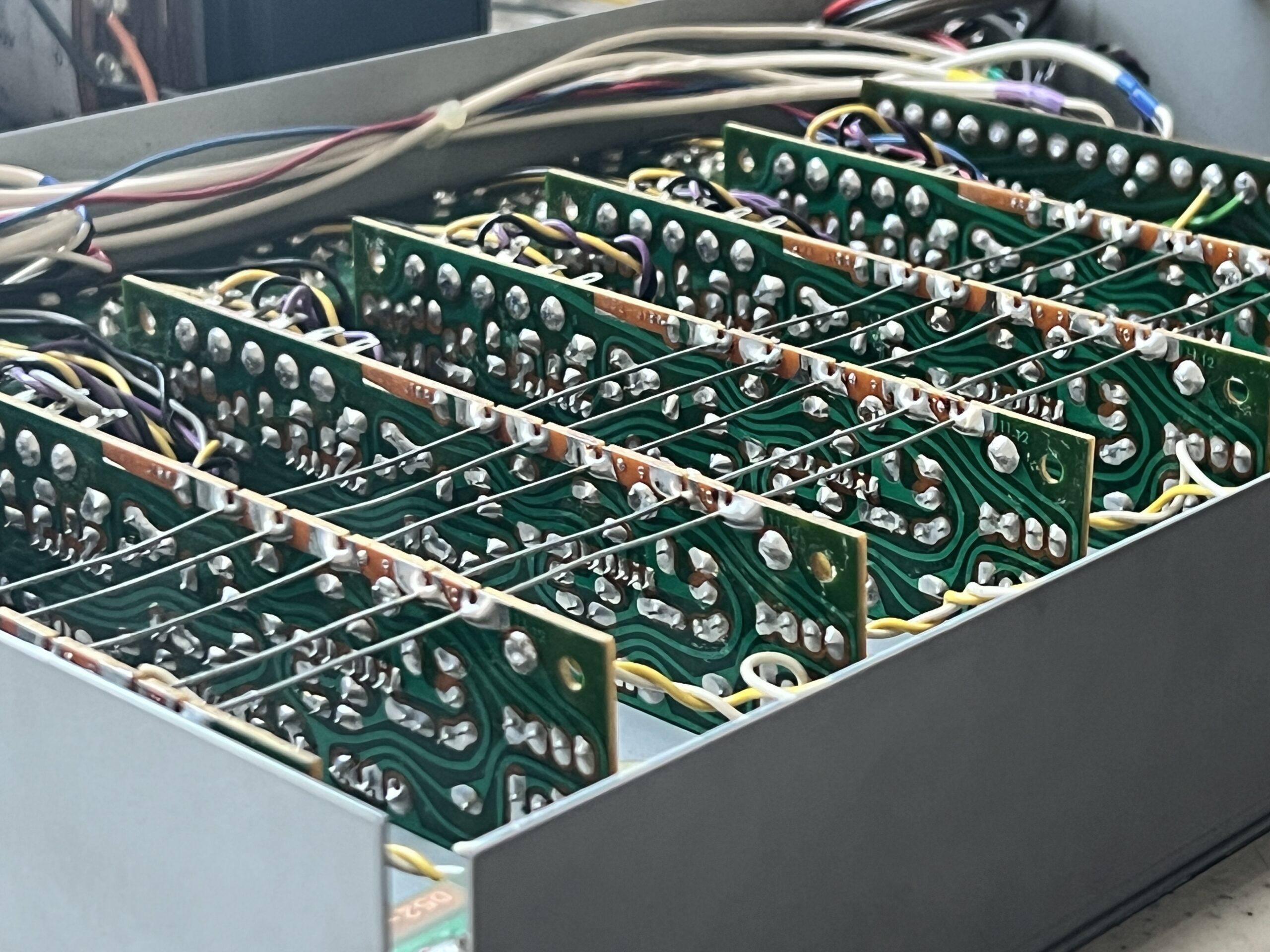

Leave a Reply